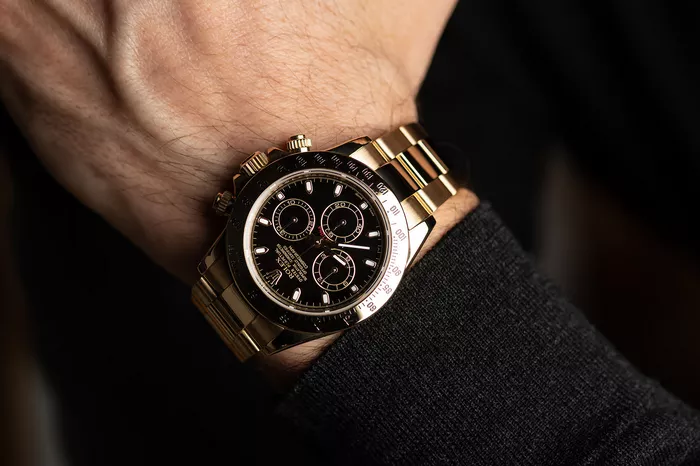At the U.S. Open, gymnastics icon Simone Biles made headlines not just for her athletic prowess but also for her impeccable taste in horology. Biles was spotted flaunting the Audemars Piguet Royal Oak Mini Frosted Gold, underscoring the growing trend of smaller, more refined timepieces that are captivating the watch industry.
For years, the watch world has witnessed a shift from oversized timepieces—an era defined by the hefty models of the ‘90s and early 2000s—toward a resurgence of compact, elegant designs. This trend reflects a broader movement away from the oversized watches popularized by brands like Panerai, toward the sophisticated allure of smaller, intricately designed models.
One prime example of this trend is the petite 19mm Cartier Baignoire, which has become a favorite among celebrities and watch enthusiasts alike. Once predominantly worn by women—such as Queen Elizabeth II and other notable figures—tiny watches are now being embraced by modern male celebrities, including Timothée Chalamet, who sports a Cartier daily, and Mark Cho of The Armoury, known for stacking his Baignoires.
Biles’s choice of the Audemars Piguet Royal Oak Mini is a testament to this trend. The white-gold Mini, part of a trio of diminutive Royal Oaks, boasts a 23mm case and presents a refined, scaled-down version of the classic Gerald Genta design. The Mini maintains the essence of the original Royal Oak with its Mini Tapisserie dial, octagonal bezel, and integrated bracelet, albeit in a more charmingly compact form. Despite the shift to a quartz movement, the Mini retains the iconic aesthetic of its larger counterparts, demonstrating that timeless design can thrive in a smaller scale.
The trend towards smaller watches is not merely a niche interest but a significant shift in the watch industry. The preference for more wearable, proportionate timepieces is gaining momentum, suggesting a departure from the era of excessively large watches.
In contrast, some watch aficionados continue to embrace larger models, as seen with Michael Jordan’s choice of the IWC Big Pilot’s Watch Perpetual Calendar TOP GUN Lake Tahoe. This 46.5mm timepiece, encased in white ceramic, features a perpetual calendar, moon phase display, and a seven-day power reserve. With its robust features and price tag of $41,000, it epitomizes the grandeur of larger timepieces.
Similarly, Aaron Judge was seen sporting the Audemars Piguet Royal Oak Perpetual Calendar “John Mayer” at the U.S. Open. This 41mm watch, crafted in white gold, features a striking blue “crystal sky” dial and is powered by the Calibre 5134 automatic movement. Limited to 200 pieces and priced over $200,000, it’s a prime example of how large watches can still make a bold statement.
On the other end of the spectrum, Roger Federer’s Rolex Cosmograph Daytona stands out for its vintage-inspired design, celebrating the 100th anniversary of Le Mans with a unique 24-hour totalizer and a yellow-gold case. This model, with its limited availability and distinctive features, continues to attract collectors.
Finally, Mark Zuckerberg’s recent acquisition of the Patek Philippe ref. 5236P perpetual calendar with an in-line display further illustrates the evolving landscape of luxury watches. Zuckerberg’s embrace of this sophisticated timepiece marks a notable shift in his style, reflecting the broader appeal of high-end, intricately crafted watches.
In summary, while larger watches continue to captivate a segment of the market, the resurgence of smaller, elegantly designed timepieces signifies a significant trend. As watch enthusiasts and celebrities like Simone Biles embrace these compact marvels, the industry’s focus is shifting towards more refined and wearable options.

